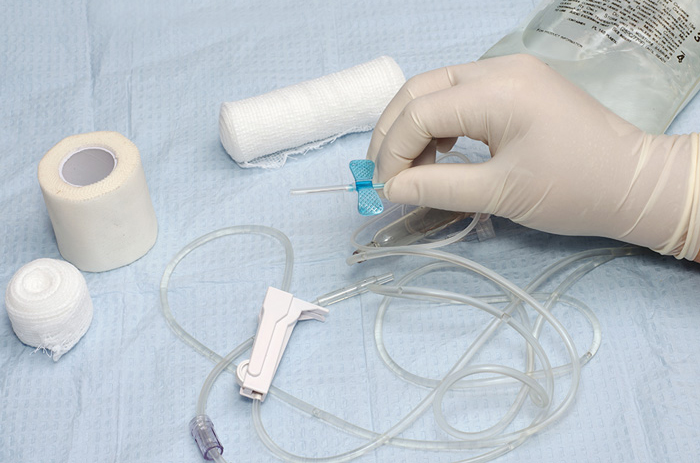Safety-engineered devices: technique progress
 EU directive 200/32 was implemented one year ago. It introduced fundamental preventive measures to avoid exposure to pathogen risk, such as forbidding recapping needles with devices that are not safety-engineered and making the use of safety-engineered devices a legal requirement.
EU directive 200/32 was implemented one year ago. It introduced fundamental preventive measures to avoid exposure to pathogen risk, such as forbidding recapping needles with devices that are not safety-engineered and making the use of safety-engineered devices a legal requirement.
The importance of assessing and preventing risk has been long documented, starting with OSHA data, according to which every year around 1 million sharps injuries take place, amounting to 800,000-5,120,00 costs.
Accidental sharps injuries for healthcare workers can be prevented. It is just necessary to:
- Put into place standard precautions, such as the WHO recommendations on hand-washing; indeed standard precautions can already reduce the frequency and the consequences of exposure to biological risk.
- Develop, validate and introduce safer operational procedures;
- Asses, adopt and use safety-engineered devices, after the staff has received proper training on how to use them
- Raise awareness among healthcare workers, inform them and give them the necessary training, on risk, using personal and collective protective equipment, the importance of reporting incidents and on the duties and rights of each worker (People for Healthcare Administration, Safety and Efficiency PHASE Study Group)
Taking these steps, it is possible to get excellent results, as published by PHASE regarding the situation in Europe:
| Source | Country | Conclusions | ||
| SIROH (Italian Study Group on Occupational Risk of HIV Infection) Monitoring 16 hospitals 2003-2006 in: Needlestick-prevention devices: we should already be there, J Hosp Infect (2008) dol:10.1016/J.Jhn.2008.10.17 | Italy | Introducing Needle-stick Prevention Devices (NPDs) in 16 hospitals which were monitored in 2003-2006 showed that accidental sharps injuries were reduced by 86%. | ||
| GERES (Groupe d'Etude sur le Risque d'Exposition des Soignants) In: F. Lamontagne et al. Role of Safety-engineered Devices in Preventing Needlestick Injuries in £2 French Hospitals. Infect Control Hosp Epidemiol 2007; 28:1352-1360 | France | Introducing NPDS in the 32 hospitals monitored for the study reduced accidental sharps injuries by 75%. | ||
| Valls V., et al. Use of Safety Devices and the Prevention of Percutaneous Injuries Among Healthcare Workers.Infect Control Hosp Epidemiol 2007; 28:1352-1360 | Spain | Introducing NPDs alongside an intense training programme has led to reducing accidental sharps injuries by 93%. | ||
| B.L. Cullen et al. Potential for reported needlestick injury prevention among healthcare workers through safety device usage and improvement of guideline adherence: expert panel assessment. Journal of Hospital Infection (2006) 63, 445-451 | UK | Using NPDs leads to preventing 72% of all accidental sharps injuries and 88% of venepuncture/injection injuries. | ||
| Wicker S. et al. Prevalence and prevention of needlestick injuries prevention among healthcare workers ina German university hospital. Int.Arch Occup Environ Health DOI 10.10007/s00420-007-0219-7 | Gerrmany | The best way to protect health care workers from accidental sharps injuries is using NPDs. | ||
| EPINet (Exposure Prevention Information Network) surveillance database in: JJegger et al. The Impact of U.S. policies to protect healthcare workers from bloodborne pathogens: the critical role of safety-engineered devices. Journal of Infection and Public Health (2008) 1, 62-71 | USA | Introducing NPDs gradually in 87 monitored hospitals (1993-2004) reduced accidental sharps injuries by 59% for phlebotomy needles and by 53% for I.V. catheter stylets. | ||
| L Visser Toronto hospital reduces sharp injuries by 80%, eliminates blood collection injuries. Healthcare Quarterly Vol. 9 No.1 2006, 68:70 | Canada | Using NPDs reduces accidental sharps injuries by 80% and eliminates completely blood collection injuries. |
- Prev
- Next >>




